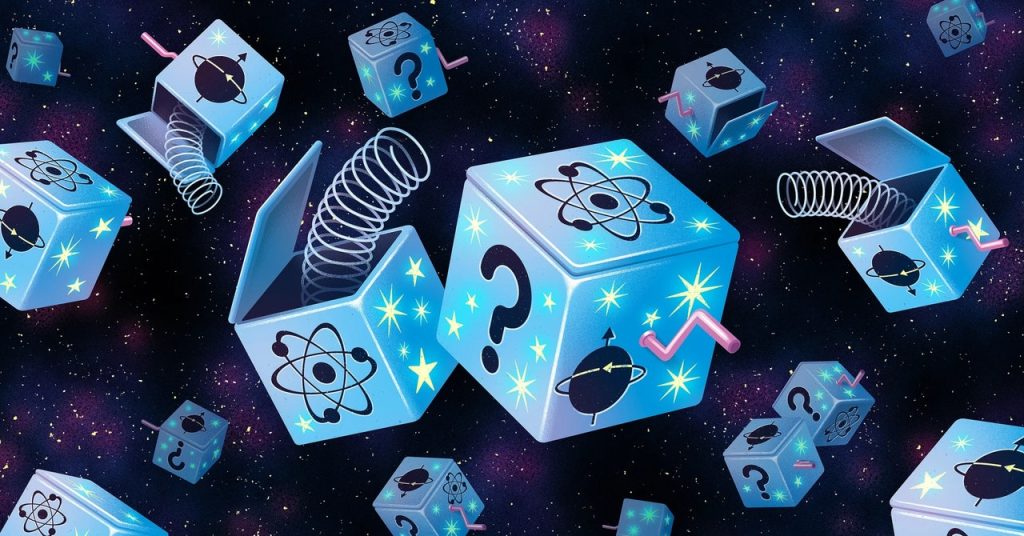Exploring Dark Matter: Beyond WIMPs and Axions
Rethinking Dark Matter Candidates
For decades, researchers have focused on two primary candidates for dark matter: weakly interacting massive particles (WIMPs) and axions. These particles were thought to solve other physics mysteries as well. However, after 40 years of fruitless searches, physicists are now considering that dark matter might be more complex, possibly comprising a whole family of particles, similar to visible matter.
“The most common hypothesis is that this is somehow simple. Why on earth should we expect that?”
Challenges in Detecting Axions
Experiments have been searching for axions for decades, but progress has been slow. Early detectors required long measurements to differentiate between noise and potential axion signals, exploring only a small range of axion masses. So far, no axions have been found.
Lighter Dark Matter
Emergence of Light Dark Matter
Around 2008, the idea of a dark matter particle similar to a WIMP but smaller began to gain traction. These “light dark matter” particles have masses similar to those of ordinary matter, ranging from electron to proton size. However, for these particles to match thermal relics, an unknown force must exist to affect them.
Portal Particles and Dark Photons
Every force in nature is mediated by a force-carrying particle. For light dark matter, these are “portal particles” that bridge the gap between ordinary and dark matter. One candidate is the dark photon, analogous to the familiar photon. Other possibilities include Higgs-like particles or force carriers with no known analogue.

The SLAC and Stanford University particle physicists Natalia Toro and Philip Schuster have been leaders in the effort to dream up new possibilities for the nature of dark matter and how to look for them.
Photograph: Lyndie Chiou
The Light Dark Matter Experiment (LDMX)
If funded, SLAC’s planned Light Dark Matter Experiment (LDMX) will scan for light dark matter. The experiment will accelerate electrons toward a tungsten target. In rare collisions, if light dark matter exists, the electron will interact with the nucleus via the unknown dark force, significantly draining the electron’s energy.
In the worst-case scenario, light dark matter might be produced once every 10,000 trillion hits. However, it could be as frequent as one in every 100 billion impacts. LDMX will need to run for three to five years to definitively detect or rule out thermal relic light dark matter.
Ultralight Dark Matter
Characteristics of Ultralight Dark Matter
Ultralight dark matter is axion-like but not required to solve the strong CP problem. It can be as light as 10 billionths of a trillionth of an electron’s mass, corresponding to a wave with a wavelength as long as a small galaxy. These particles naturally follow from string theory, arising from the ways that six tiny dimensions might be compactified in our 4D universe.
“The existence of light axionlike particles is strongly motivated by many kinds of string compactifications,” said Jessie Shelton, a physicist at the University of Illinois, “and it’s something that we should take seriously.”
Detecting Ultralight Dark Matter
Experiments like Stanford University’s DM Radio and the ADMX-EFR at the University of Washington aim to detect ultralight dark matter. These experiments listen for dark matter that surrounds us, using powerful magnetic fields to detect the conversion of dark matter into microwave photons.
The biggest challenge is the faintness of the predicted microwave photons, requiring the removal of all experimental noise except for the system’s inherent quantum jitter.
Other Dark Matter Theories
Primordial Black Holes and Modified Gravity
Other theories suggest that dark matter might be primordial black holes created during the Big Bang or that the prevailing theory of gravity might be incorrect. However, these competing gravity theories have not garnered much interest.
“At this point, let’s be honest, everybody is guessing.”
Original story reprinted with permission from Quanta Magazine, an editorially independent publication of the Simons Foundation whose mission is to enhance public understanding of science by covering research developments and trends in mathematics and the physical and life sciences.

1 Comment
Ever wondered if ultralight dark matter could solve the universe’s biggest mysteries?